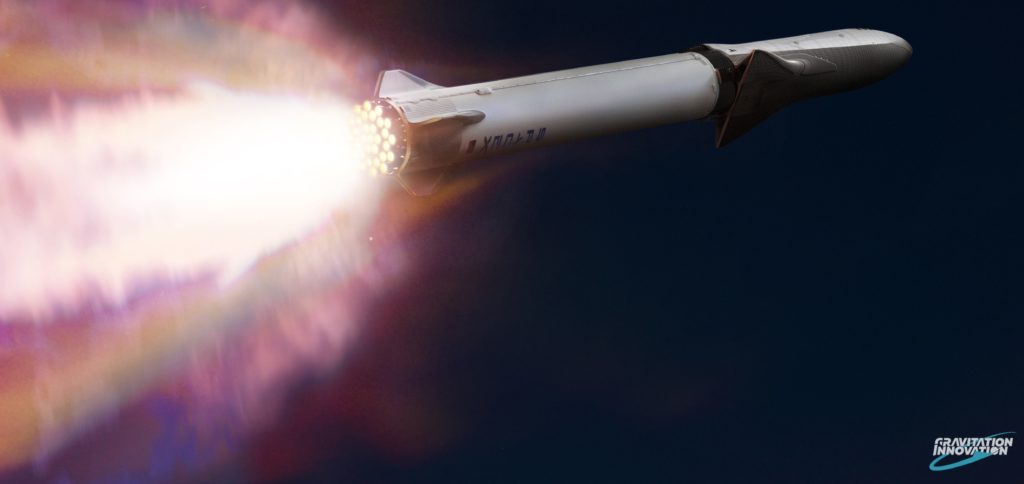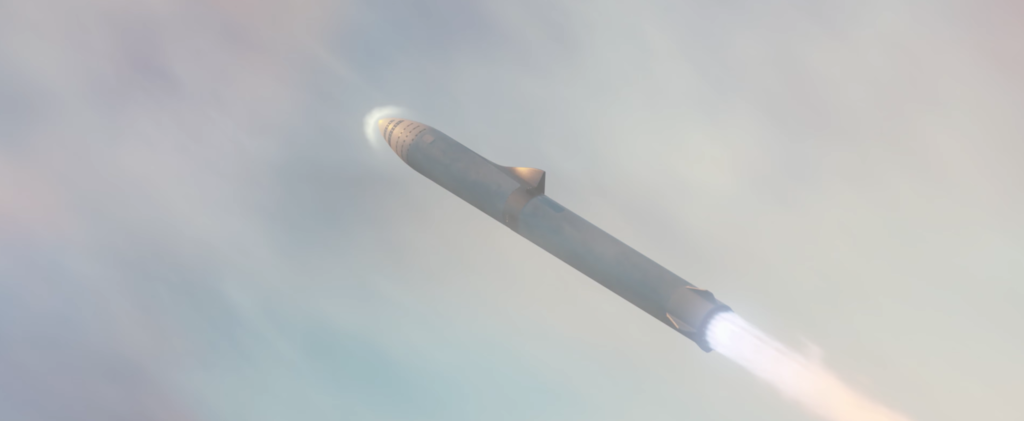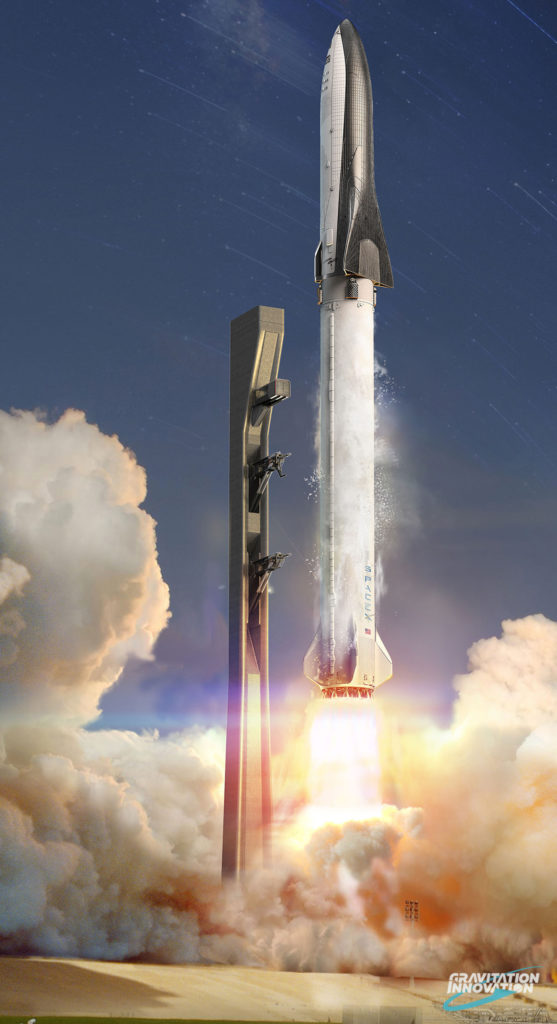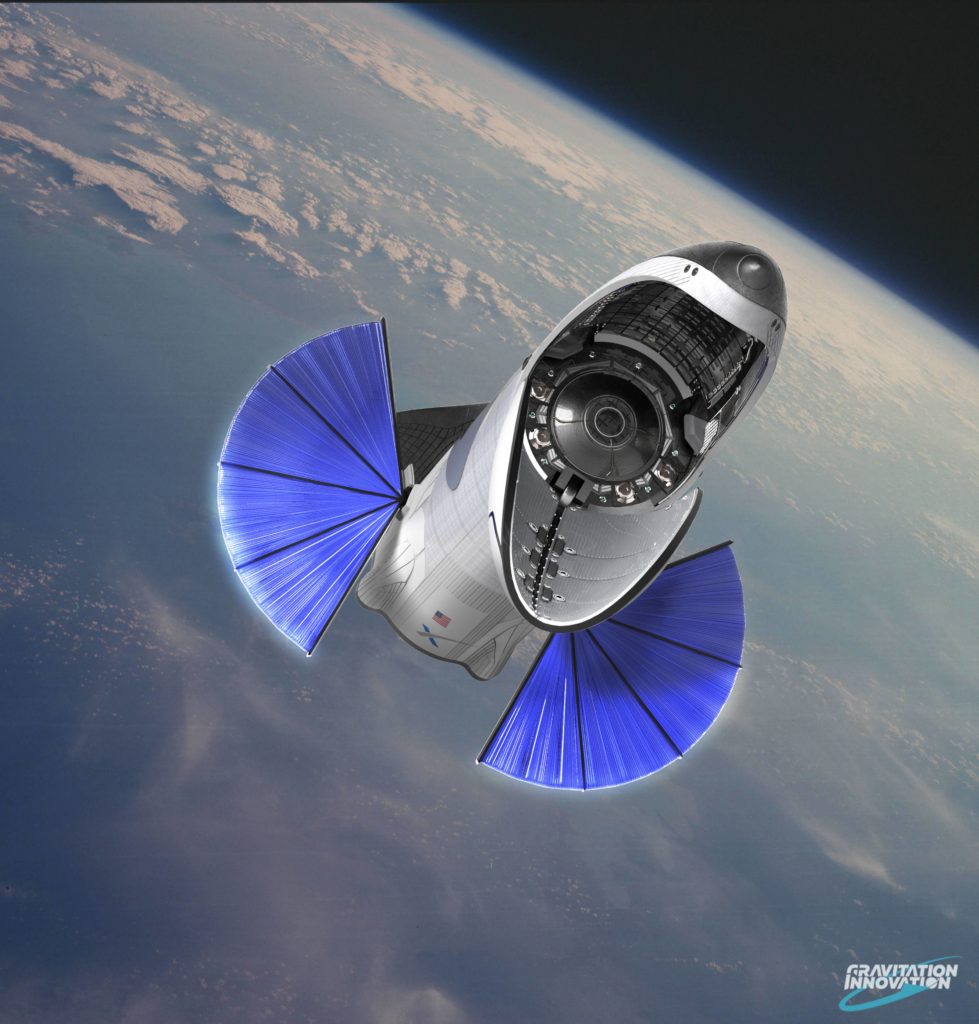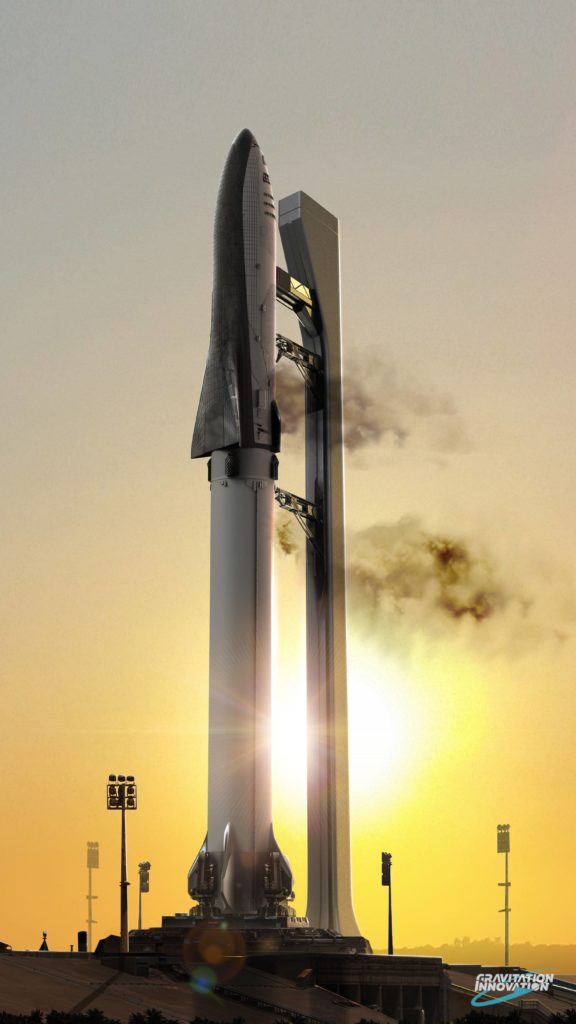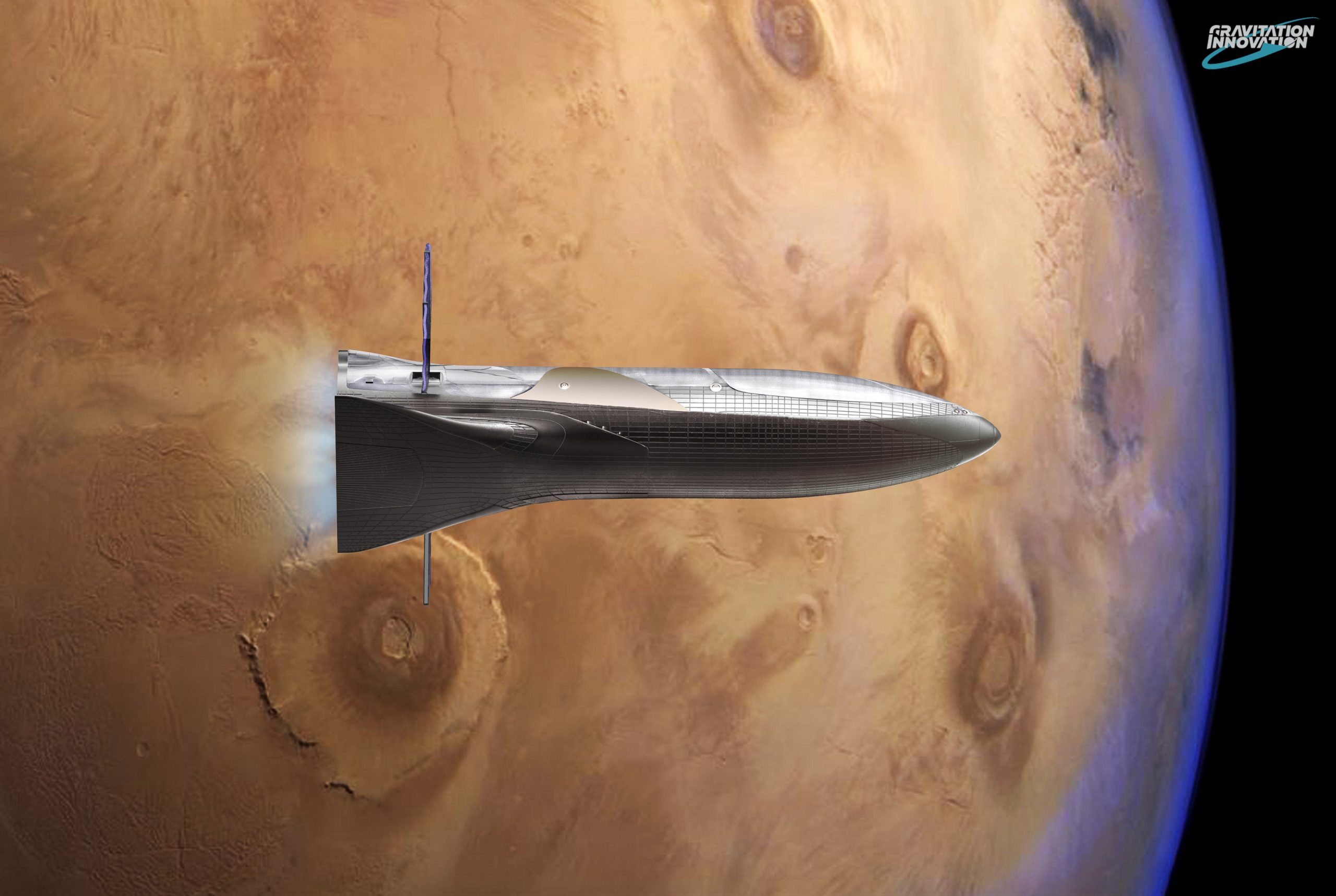
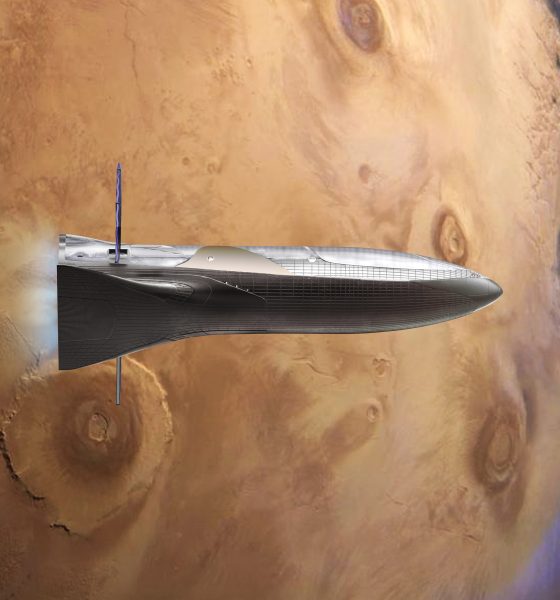
SpaceX
SpaceX’s BFR Mars rocket and spaceship rendered in extraordinary fan artwork
Part of a newly-formed group known as Gravitation Innovation, artist and spaceflight fan David Romax published an extraordinary series of concept artwork focused solely on SpaceX’s massive next-generation Mars rocket, known as the Big F—— Rocket (BFR). Generously published with the intent of providing SpaceX fans with a number of digital wallpapers, Romax’s work acts as an amazing companion to SpaceX’s own small collection of BFR renderings, perhaps even surpassing the company’s concept art in some cases.
David was inspired to create a series of BFR-themed wallpapers by a friend who had urged him to put his skills as a 3D modeler and artist to work for SpaceX (or at least the large community of fans built around the rocket company) by producing unofficial renders of its rockets – produce he most certainly did, and the results of his efforts are easily some of the best examples of unofficial artwork ever created by SpaceX enthusiasts.

Effectively unreleased, an updated Mars colonization video shown in 2018 replaces 2016’s ITS with the newer BFR design. (SpaceX)
Due to an understandable lack of technical detail available in the concept imagery SpaceX has thus far published for BFR and the earlier Interplanetary Transport System (ITS), Romax had to rely on aesthetic and technical intuition almost constantly over the process of producing his own artist impressions of BFR. In a number of cases, a matte painting style was used to ensure extraordinary realism by integrating real aspects of SpaceX’s current launch facilities and signatures of its active Falcon 9 and Falcon Heavy launch vehicles and its Crew and Cargo Dragon spacecraft, reaching a level of believable detail that effortlessly surpasses similar media created by SpaceX.
- David Romax’s artwork has blown away a number of SpaceX (and general spaceflight) fans since he shared them earlier this week. (David Romax/Gravitation Innovation)
- .While SpaceX’s own visualizations are gorgeous and thrilling in their own rights, Romax’s interpretation adds an unparalleled level of shock and awe. (SpaceX)
Of course, a comparative lack of extreme detail is really not any fault of SpaceX: given the preliminary nature of the designs of both BFR and ITS at the time they were publicly revealed (September 2016 and 2017), adding details that extended beyond the actual scope of current design work (thus treading into the realm of speculation) would be fundamentally counterproductive for a company more recently keen on showing off results over parading what can be described as ‘paper rockets’. In both the ITS and BFR reveals, CEO Elon Musk’s presentations were repeatedly (and pointedly) punctuated with truly surprising reveals of real, physical progress with mature rocket R&D programs and extensive prototype testing.
Regardless, the level of detail Romax so elegantly and seamlessly integrated into SpaceX’s preliminary Mars rocket booster and crew and cargo spaceship designs is shockingly convincing and adds a level of depth and drama that is unique in fan renderings of SpaceX’s vehicles. It certainly helps that today, nearly a year after BFR was first unveiled, SpaceX’s hardware development for BFR is far more mature. Currently, those tangible efforts range from thousands of seconds of hot-fire testing of the rocket’s Raptor propulsion system to tangible work beginning on the flight version of that advanced engine, as well as a huge temporary tent housing preliminary BFR production tooling while construction is just beginning at a different Port of Los Angeles-located plot of land intended to support the first dedicated BFR factory within 12-18 months. One step further, SpaceX’s highly reusable upgrade to Falcon 9 and Heavy, known as Block 5, has already debuted and will soon put SpaceX’s experience with rocket reuse to the test.
- SpaceX’s BFR. (Gravitation Innovation/David Romax)
- The cargo version of the BFS (Big F- Spaceship) rendered by David Romax, including a number of educated guesses at what it might look like and how it might function. At the request of a friend, artist David Romax put together a truly jaw-dropping collection of concept art featuring SpaceX’s BFR rocket and its Cargo and Crew spaceships. (Gravitation Innovation/David Romax)
- BFR prepares for launch as the sun sets over the upgraded LC-39A, built off a concept of the future modifications included in SpaceX’s 2016 and 2017 video updates. At the request of a friend, artist David Romax put together a truly jaw-dropping collection of concept art featuring SpaceX’s BFR rocket and its Cargo and Crew spaceships. (Gravitation Innovation/David Romax)
All thanks to David Romax and Gravitation Innovation for the amazing artwork and the unflinching dedication to the future of spaceflight. Download the wallpapers in full-resolution here.
Follow us for live updates, peeks behind the scenes, and photos from Teslarati’s East and West Coast photographers.
Teslarati – Instagram – Twitter
Tom Cross – Twitter
Pauline Acalin – Twitter
Eric Ralph – Twitter

Investor's Corner
SpaceX IPO is coming, CEO Elon Musk confirms
However, it appears Musk is ready for SpaceX to go public, as Ars Technica Senior Space Editor Eric Berger wrote an op-ed that indicated he thought SpaceX would go public soon. Musk replied, basically confirming it.

Elon Musk confirmed through a post on X that a SpaceX initial public offering (IPO) is on the way after hinting at it several times earlier this year.
It also comes one day after Bloomberg reported that SpaceX was aiming for a valuation of $1.5 trillion, adding that it wanted to raise $30 billion.
Musk has been transparent for most of the year that he wanted to try to figure out a way to get Tesla shareholders to invest in SpaceX, giving them access to the stock.
He has also recognized the issues of having a public stock, like litigation exposure, quarterly reporting pressures, and other inconveniences.
However, it appears Musk is ready for SpaceX to go public, as Ars Technica Senior Space Editor Eric Berger wrote an op-ed that indicated he thought SpaceX would go public soon.
Musk replied, basically confirming it:
As usual, Eric is accurate
— Elon Musk (@elonmusk) December 10, 2025
Berger believes the IPO would help support the need for $30 billion or more in capital needed to fund AI integration projects, such as space-based data centers and lunar satellite factories. Musk confirmed recently that SpaceX “will be doing” data centers in orbit.
AI appears to be a “key part” of SpaceX getting to Musk, Berger also wrote. When writing about whether or not Optimus is a viable project and product for the company, he says that none of that matters. Musk thinks it is, and that’s all that matters.
It seems like Musk has certainly mulled something this big for a very long time, and the idea of taking SpaceX public is not just likely; it is necessary for the company to get to Mars.
The details of when SpaceX will finally hit that public status are not known. Many of the reports that came out over the past few days indicate it would happen in 2026, so sooner rather than later.
But there are a lot of things on Musk’s plate early next year, especially with Cybercab production, the potential launch of Unsupervised Full Self-Driving, and the Roadster unveiling, all planned for Q1.
News
SpaceX reportedly mulling IPO, eyeing largest of all time: report
“I do want to try to figure out some way for Tesla shareholders to participate in SpaceX. I’ve been giving a lot of thought to how to give people access to SpaceX stock,” Musk said.
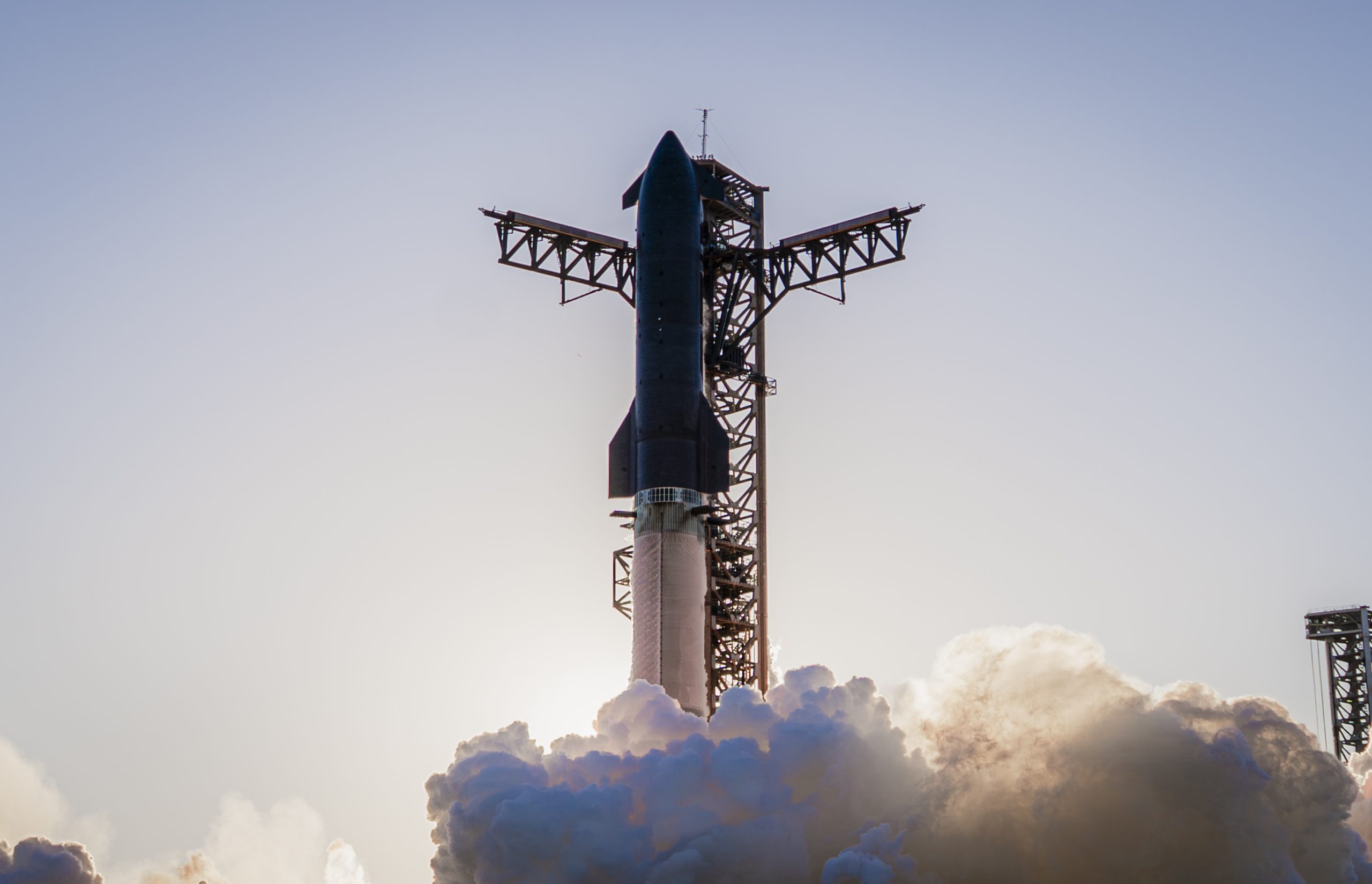
SpaceX is reportedly mulling an initial public offering, eyeing what would be the largest valuation at the time of availability of all time, a new report from Bloomberg said on Tuesday.
It is one of many reports involving one of Elon Musk’s companies and a massive market move, as this is not the first time we have seen reports of an IPO by SpaceX. Musk himself has also dispelled other reports in the past of a similar nature, including an xAI funding round.
SpaceX and Musk have yet to comment on the report. In the past, untrue reports were promptly replied to by the CEO; this has not yet gained any response, which is a good sign in terms of credibility.
However, he said just a few days ago that stories of this nature are inaccurate:
“There has been a lot of press claiming SpaceX is raising money at $800B, which is not accurate. SpaceX has been cash flow positive for many years and does periodic stock buybacks twice a year to provide liquidity for employees and investors. Valuation increments are a function of progress with Starship and Starlink and securing global direct-to-cell spectrum that greatly increases our addressable market. And one other thing that is arguably most significant by far.”
There has been a lot of press claiming @SpaceX is raising money at $800B, which is not accurate.
SpaceX has been cash flow positive for many years and does periodic stock buybacks twice a year to provide liquidity for employees and investors.
Valuation increments are a…
— Elon Musk (@elonmusk) December 6, 2025
Musk has discussed a potential IPO for SpaceX in recent months, as the November 6 shareholder meeting, as he commented on the “downsides” of having a public company, like litigation exposure, quarterly reporting pressures, and other inconveniences.
Nevertheless, Musk has also said he wants there to be a way for Tesla shareholders to get in on the action. At the meeting in early November, he said:
“I do want to try to figure out some way for Tesla shareholders to participate in SpaceX. I’ve been giving a lot of thought to how to give people access to SpaceX stock.”
Additionally, he added:
“Maybe at some point., SpaceX should become a public company despite all the downsides of being public.”
Musk has been historically reluctant to take SpaceX public, at times stating it could become a barrier to colonizing Mars. That does not mean it will not happen.
Bloomberg’s report cites multiple unidentified sources who are familiar with the matter. They indicate to the publication that SpaceX wants to go public in mid-to-late 2026, and it wants to raise $30 billion at a valuation of around $1.5 trillion.
This is not the first time SpaceX has discussed an IPO; we reported on it nine years ago. We hope it is true, as the community has spoken for a long time about having access to SpaceX stock. Legendary investor Ron Baron is one of the lucky few to be a SpaceX investor, and said it, along with Tesla, is a “lifetime investment.”
Tesla bull Ron Baron reveals $100M SpaceX investment, sees 3-5x return on TSLA
The primary driver of SpaceX’s value is Starlink, the company’s satellite internet service. Starlink contributes 60-70 percent of SpaceX’s revenue, meaning it is the primary value engine. Launch services, like Falcon 9 contracts, and the development of Starship, also play supporting roles.
News
SpaceX reaches incredible milestone with Starlink program
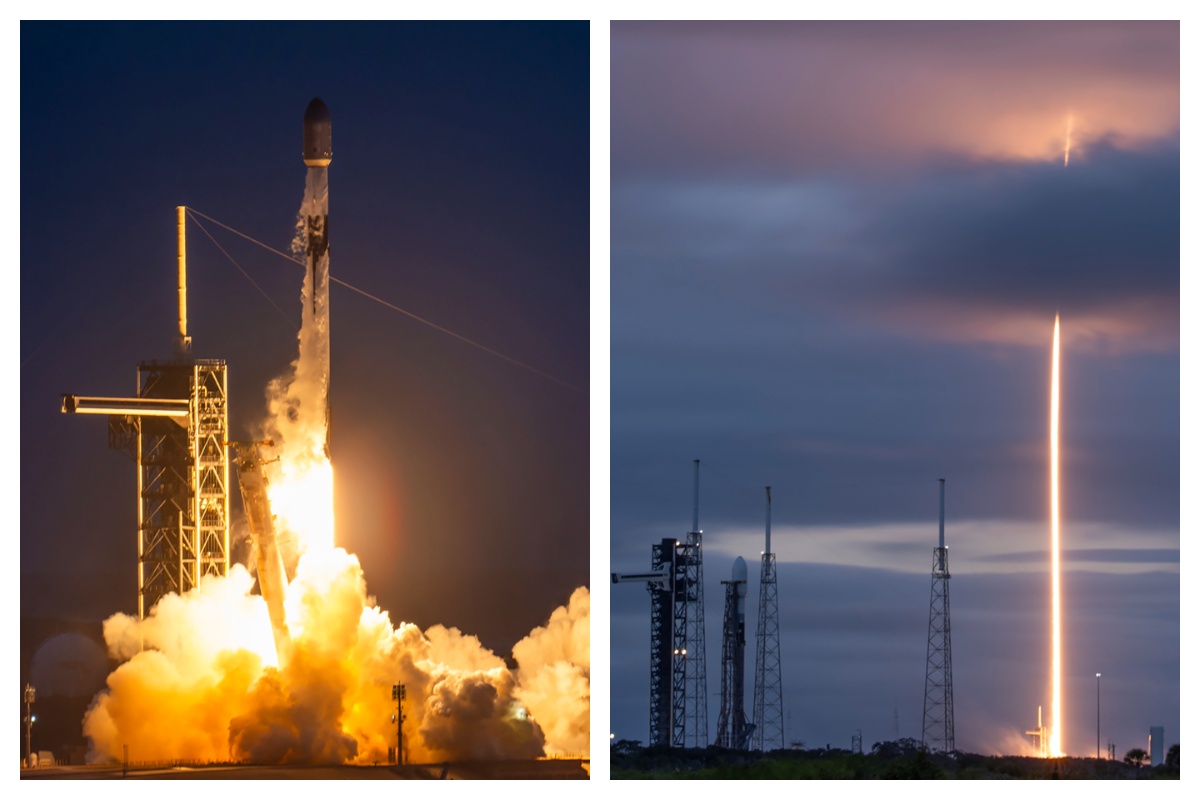
SpaceX reached an incredible milestone with its Starlink program with a launch last night, as the 3,000th satellite of the year was launched into low Earth orbit.
On Monday, SpaceX also achieved its 32nd flight with a single Falcon 9 rocket from NASA’s Kennedy Space Center.
The mission was Starlink 6-92, and it utilized the Falcon 9 B1067 for the 32nd time this year, the most-used Falcon booster. The flight delivered SpaceX’s 3000th Starlink satellite of the year, a massive achievement.
There were 29 Starlink satellites launched and deployed into LEO during this particular mission:
Falcon 9 launches 29 @Starlink satellites from Florida pic.twitter.com/utKrXjHzPN
— SpaceX (@SpaceX) December 9, 2025
SpaceX has a current goal of certifying its Falcon boosters for 40 missions apiece, according to Spaceflight Now.
The flight was the 350th orbital launch from the nearby SLC-40, and the 3,000 satellites that have been successfully launched this year continue to contribute to the company’s goal of having 12,000 satellites contributing to global internet coverage.
There are over five million users of Starlink, the latest data shows.
Following the launch and stage separation, the Falcon 9 booster completed its mission with a perfect landing on the ‘Just Read the Instructions’ droneship.
The mission was the 575th overall Falcon 9 launch, highlighting SpaceX’s operational tempo, which continues to be accelerated. The company averages two missions per week, and underscores CEO Elon Musk’s vision of a multi-planetary future, where reliable connectivity is crucial for remote work, education, and emergency response.
As Starlink expands and works toward that elusive and crucial 12,000 satellite goal, missions like 6-92 pave the way for innovations in telecommunications and enable more internet access to people across the globe.
With regulatory approvals in over 100 countries and millions of current subscribers, SpaceX continues to democratize space, proving that reusability is not just feasible, but it’s also revolutionary.
